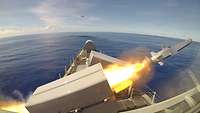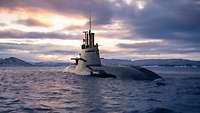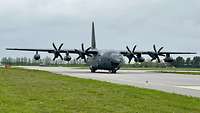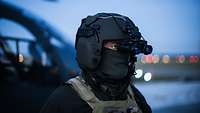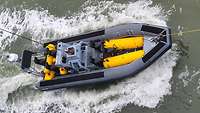New submarines and antishipping missiles for the Navy
New submarines and antishipping missiles for the Navy
- Date:
- Reading time:
- 3 MIN
Germany and Norway are cooperating in order to jointly procure equipment for their fleets. Two contracts were signed on 8 July.
BAAINBwBundesamt für Ausrüstung, Informationstechnik und Nutzung der Bundeswehr ordered two 212CD class submarines from ThyssenKrupp Marine Systems. However, the overall construction order was not placed by the Bundeswehr alone: The project comprises a total of six identically designed submarines, two for the German navy and four for the Norwegian naval forces.
The new Norwegian-German boat type is based on the 212A class, which is already in service in the German fleet, and was named 212CD, short for Common Design. “These submarines combine tried and tested technology and developments which will prepare us for the future, particularly in the field of sensor technology,” says Jörg Jährig, project manager at BAAINBwBundesamt für Ausrüstung, Informationstechnik und Nutzung der Bundeswehr.
Capabilities based on submarines that are already state of the art
The combat direction system is another new feature of the joint submarine class. It is designed to process an enormous amount of sensor data, which gives the crew new options for the compilation of situation pictures while enhancing the ability to network with allied units. The acoustic signature of type U212CD has been significantly reduced by comparison and is designed to prevent discovery by potential adversaries in spite of the improvements in detection procedures.
However, the new class distinguishes itself not just by technological progress. Due to the intended close cooperation between both navies, planners are expecting synergies for the new submarines’ operation, logistics and maintenance. This is intended to increase the strategic weapon system’s operational availability and reduce costs. “Not least, cooperation with our Norwegian partners will give our armed forces new possibilities in the field of national and Alliance defense,” is Jährig’s assessment of the ambitious binational project.
According to the current planning status, TKMS will deliver the first German vessel in 2032. The Norwegian navy is to receive the first boat of the new submarine class as early as 2029. The contract with a total value of roughly 5.5 billion euros also comprises extensive additional logistic services and training equipment, mainly simulators.
The German procurement agency and the Norwegian procurement agency Forsvarsmateriell (Norwegian Defence Material Agency/NDMA) will set up a joint program office in Kiel. According to BAAINBwBundesamt für Ausrüstung, Informationstechnik und Nutzung der Bundeswehr’s explicit intention, the office will support the production and delivery of both the Norwegian and the German submarines.
Comparison between the submarine classes 212A and 212CD
U212A | U212CD | |
|---|---|---|
| Length (total) | 56,0 m | ca. 73 m |
Width | 7,0 m | ca. 10 m |
Heigth | 11,5 m | ca. 13 m |
Displacement (surfaced) | 1.450 t | ca. 2.500 m3 |
Common antishipping missiles for both fleets
Based on the cooperation between the defense agencies in both countries, BAAINBwBundesamt für Ausrüstung, Informationstechnik und Nutzung der Bundeswehr also ordered the delivery of Naval Strike Missile (NSM) type anti-ship guided missiles from the Norwegian company Kongsberg Defence and Aerospace on 8 July. A further joint program office has already been set up for this project in Bergen. The Norwegian company Kongsberg is already cooperating with the German company ThyssenKrupp on the 212CD submarine project.
The NSM Block 1A missile is capable of precisely engaging sea and land targets, particularly targets close to the shore and/or the coast. This will provide the German Navy with another modern weapon system that can meet the increased demands of national and collective defense.
The ordered guided missiles are the improved version of an NSM model that has been in service in the Norwegian navy for about ten years. On the German side, they will be used on the class 124, 125 and 126 frigates, replacing the Harpoon RGM-84 on classes 124 and 125. In Norway, the joint new NSM 1A guided missile will replace the older model, which is the main armament of the Fridtjof Nansen-class frigates.
Apart from the actual missiles, the launchers and the entire equipment required for operation are part of the scope of delivery. The weapon system is intended to be ready for use on the first ships from the mid-2020s.


